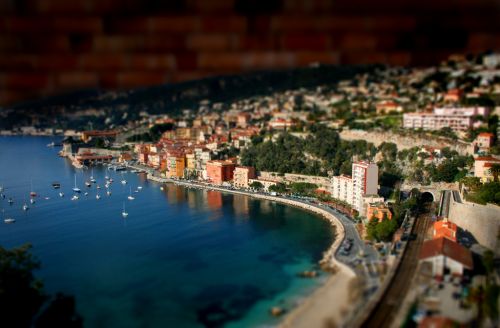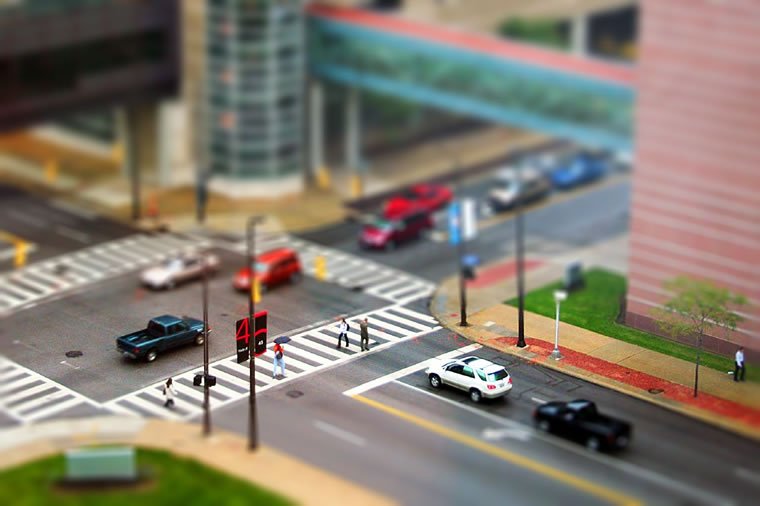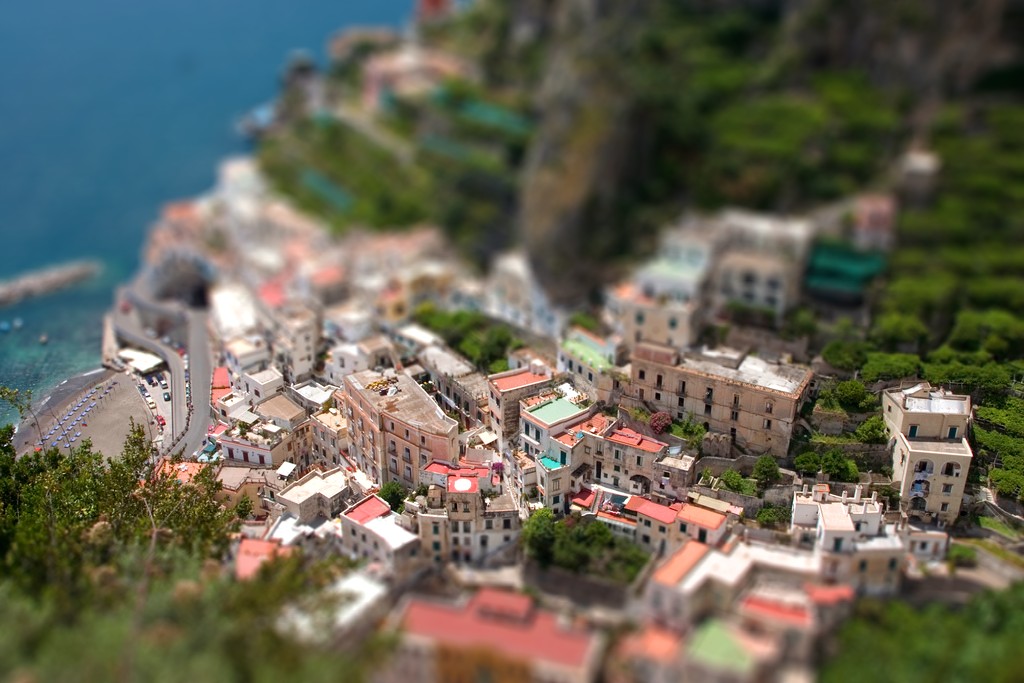Tilt-shift photography is a technique where you manipulate a camera so that a photo of a life-sized location or subject looks like a miniature-scale model. By shooting the locations from a high angle, it will create the illusion of looking down at a scale model. The example of Nice, France below by Flickr user therealjasonruff shows the technique off well.

There are a few ways for you to create tilt-shift photos:
The Traditional, Possibly Expensive Method
This method involves obtaining a decent camera, a tilt-shift lens, and reading up on the details HERE, HERE, and HERE. Not recommended for people with ADD or those feeling monetary problems.
The “Keeping it Real Fake” Method

This method involves using a graphics editor like Photoshop or GIMP to alter the focus of the photograph to simulate a shallow depth of field that would normally be encountered when using macro lenses. This will make the scene seem much smaller than it really is. By increasing the color saturation and contrast, you can simulate the bright paint often found on scale models.
To make your own tilt-shift photographs with Photoshop click HERE for a tutorial.
The Easy as Pie” Method

TiltShiftMaker is an online site that does all the hard work for you in 3 simple steps. Upload your standard photo (jpeg format, 4MB limit), select the focus size, and get the tilt-shift equivalent.
Use TiltShiftMaker HERE and check out the Flickr TiltShiftMaker pool HERE.






